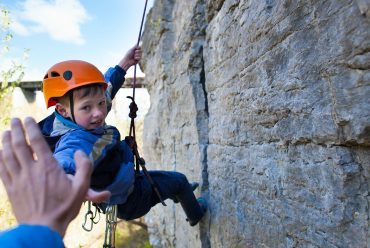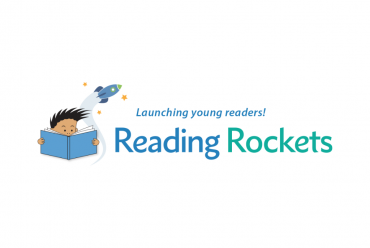Students Post-Pandemic Needing ‘Intensive’ Reading Help
More than 1 in 3 children in kindergarten through grade 3 have little chance of reading on grade level by the end of the school year without major and systemic interventions.
That’s according to a new study by the curriculum and assessment group Amplify, based on data from more than 400,000 students in kindergarten through 5th grades who participated in the Dynamic Indicators of Basic Early Literacy Skills, which Amplify administers. The research, released late Wednesday, shows that though students have begun to recover lost academic ground in the last year, big holes remain in students’ fundamental reading skills.
Researchers compared students’ reading achievement from 2019 through 2022 on DIBELS, one of the most commonly used diagnostic assessments for reading. Teachers administer the DIBELS to students in person and one-on-one, and the researchers matched midyear test data from more than 1,300 schools in 37 states who participated in the test each year from 2019-20 through 2021-22.
Across each elementary grade, fewer students are on track for grade-level reading instruction now than before the pandemic, and the earliest grades have the fewest students prepared. For example, from 2019 to 2022, the share of students who are on track in reading by the middle of the school year has fallen from 55 percent to 47 percent in kindergarten, 58 percent to 48 percent in 1st grade, and 59 percent to 51 percent in 2nd grade. By contrast, 57 percent of 5th graders are on track in reading, only a single percentage point lower than the on-track share pre-pandemic.
“We’re seeing some rebound now, which is good,” said Paul Gazzerro, Amplify’s director of data science. However, Black and Hispanic students, who had lower average reading scores compared to white students before the pandemic, fell even further behind on average during school disruptions, he said.
Black and Hispanic students have been particularly hard hit by education disruptions, having stayed in remote classrooms longer on average than their white peers according to federal data. Since the pandemic, the share of 1st graders on track in reading by midyear fell from 51 percent to 37 percent of Black students, 54 percent to 42 percent of Hispanic students, and from 65 percent to 58 percent of white students.
“When students start getting to grades 3 and 4 and 5, those compounding effects will really be prevalent, and it takes more time and more resources to actually close the gap,” said Susan Lambert, the chief academic officer for elementary humanities for Amplify. “We really want to focus hard and heavy on those early grades now, so that in the future those students aren’t feeling the impacts over time.”
And a growing group of students across the elementary grades fell severely behind, not just by a little, Gazzerro said. “There’s one group [reading] below benchmark—think of them as … ‘bubble kids,’ you know, the ones who probably need strategic support that could be offered within the classroom, but don’t need to be pulled out for something more intensive,” he said. “And then [there are] kids who are least likely to be successful at the end of the year, these kids we’re identifying as at risk.”
These at-risk students have only about a 20 percent chance of reading on grade level by the end of the school year without intensive reading interventions, according to the researchers. There are more of them today across every grade and student group than there were in 2019. They account for more than a third of K-3 students and more than a quarter of students in grades 4 and 5.
The sheer number of students in need of intense reading support strains the capacity of schools that often rely on tiered systems like response to intervention, Lambert said, in which the vast majority of students progress with only core classroom instruction and just a small percentage receive small-group or more intensive interventions.
Systemic interventions needed
At least 17 states require districts to hold students back if they are not reading on grade level by the end of 3rd grade, and another dozen allow school districts to mandate retention. In the last year, several states put their existing grade retention policies on hold in light of widespread classroom disruptions and protests by parents and teachers.
As that flexibility wanes in the states that had it, some experts argue effective retention policies should be coupled with additional, intensive reading instruction and individualized learning plans.
Yet, Lambert noted, “the kids with dyslexia, kids that need to be on IEPs, have been harder to find because they haven’t been in school,” making it more difficult to determine whether a reading difficulty comes from learning differences or interrupted schooling.
“We need to make sure that as districts and schools, we’re creating a system—not individual student interventions—but a system whereby we’re monitoring the data,” she said, and that “we’re providing the intervention in multiple ways and getting creative about that so that we can close those gaps for kids as quickly as possible.”
Deborah Wheeler, an assistant education professor at St. Cloud State University in Minnesota, was not part of the DIBELS study, but she has tracked changes in reading behaviors for children and families during the pandemic. She said schools must work to rebuild literacy habits at home, too.
During the pandemic, Wheeler found that parents of young children reported they continued to read with their children, but were much more distracted. “So [parents] would read a little bit and then have to walk away; something distracted them, work, whatever,” she said. “In the typical reading they reported that they did prior to COVID, they spent that quality time with their children. They would talk about what they read prior to reading it during the time they were reading with their child and afterwards.”
Schools need to restart discussions of literacy between teachers and parents, she said. “They need to reduce the distractions and think about the impact of those distractions. Students have not met the standards but children are very resilient. With the right environment, language and literacy rich, I feel confident that they will recover.”







